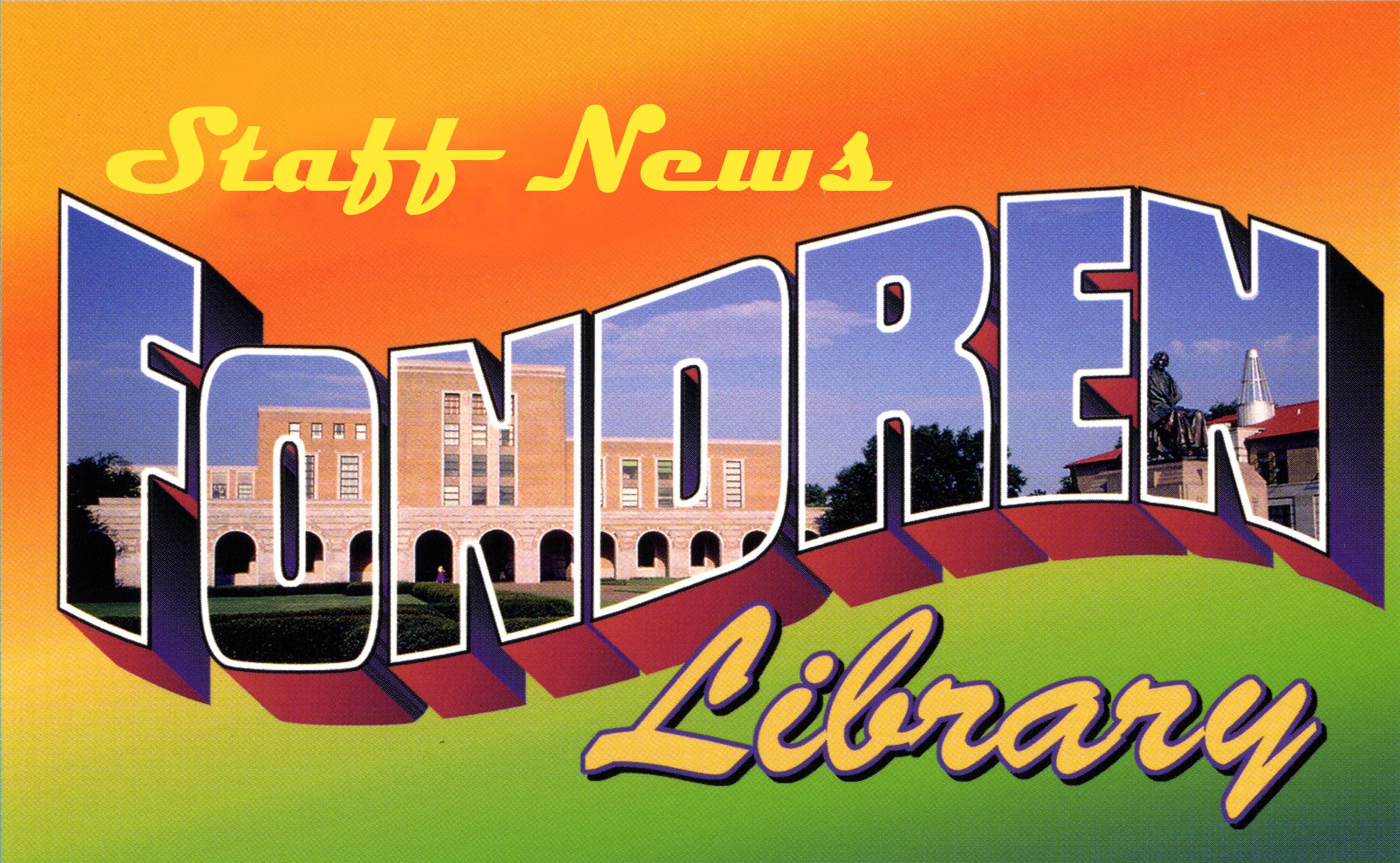The Woodson Research Center is collaborating with Rice’s Humanities Research Center and the Houston Academy of Medicine – Texas Medical Center Archives to host local high school students on field trips to Rice exploring the medical humanities.
Lecture portion of the field trip
Rachel Conrad Bracken, a Civic Humanist Fellow at the Humanities Research Center, has developed a lecture entitled “Diagnosing Deviance: How Social Norms Influence our Definitions of Health and Disease,” with the 19th century science of phrenology as a case study to “explore how cultural understandings of race and gender biased medical diagnoses and popular perceptions of “ideal” facial features. ”
Archives portion of the field trip
After Rachel’s lecture and discussion, the students gather in one of Fondren’s collaborative spaces, and have a hands-on experience with archival materials which relate to phrenology and other outmoded models of medicine.
From the Woodson Research Center, the John P. Osterhout Phrenological Chart (https://scholarship.rice.edu/handle/1911/27054) shows a 19th century doctor’s evaluation of Mr. Osterhout, measuring his relative powers on a scale of 1-7, and suggesting appropriate careers for him. Strangely, even though he was rated as having a low level of perception and memory of sizes, it was suggested he might be a good mechanic.
Another example from Woodson includes the Mirabeau B. Lamar travel journal of 1835, in which Lamar (who went on to become the second president of the Republic of Texas) describes a speaker in a local church on the topic of phrenology, and whether one can tell from the shape of a man’s head whether he will commit murder (Lamar journal, pg 12).
The Houston Academy of Medicine – Texas Medical Center Archives, represented by Phil Montgomery, brought a phrenological model, a human skull from their research collection, and handed out blank charts for the students to use in trying their own analysis.
Phil also brought a variety of older medical tools such as an early surgery kit, a lancet for bleeding patients, and an early electric shock therapy tool.
Impact
The students really enjoyed seeing the tools of the trade for these outmoded medical models and were inspired to include archives in their future research. Seeing the original tools in person helped the students see how seriously these concepts were in their day, even as we see them now as quack medicine. To quote Rachel’s lecture, “by learning to recognize the flaws in outdated models of medicine and anatomy, students can begin to see how contemporary medicine, too, is shaped by the diagnostic technologies and scientific knowledge available to us—knowledge always mediated by our culture and subject to change.”



